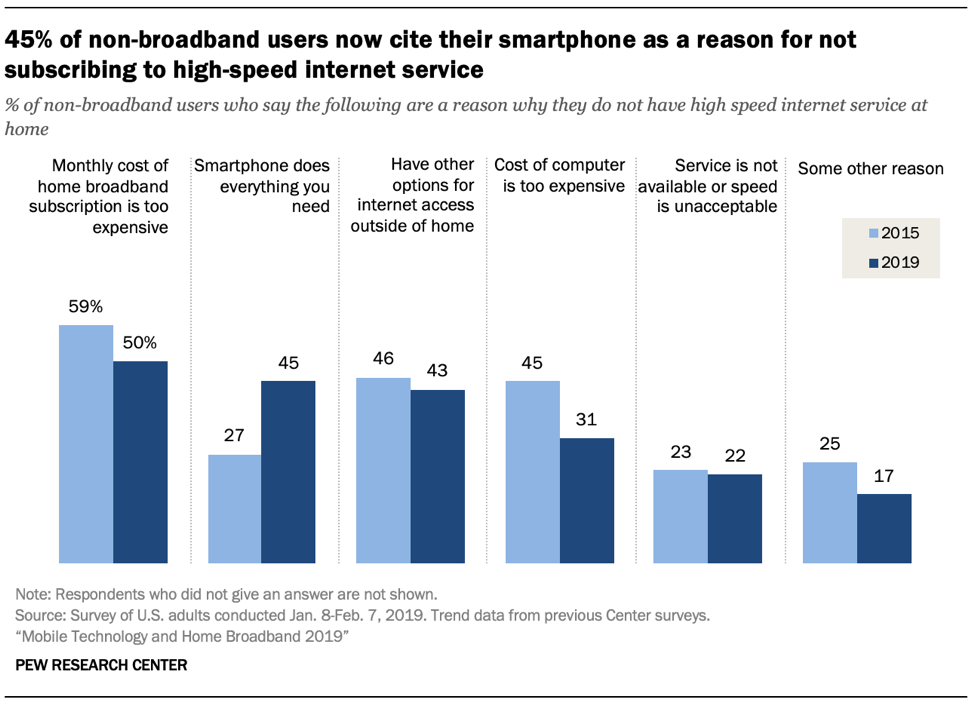At Voqal, we believe one of the biggest challenges facing the country is the delivery of affordable broadband service to all Americans. Unfortunately, too many Americans still lack affordable access today. The focus of the so-called “digital divide” has primarily been in rural areas, where broadband simply isn’t offered by any provider. This market failure continues to persist, even as the government has plowed billions in subsidies to companies to help make rural broadband deployment more attractive.
The latest data from the Federal Communication Commission’s 2019 Broadband Deployment Report shows that rural areas lack access relative to their urban counterparts. While 98.3% of Americans living in urban areas have access to 25/3 Mbps broadband service, just 73.6% of Americans living in rural areas have access to that same level of service. In addition, mobile service is available to just 69.3% of rural Americans, leaving many on the wrong side of the digital divide.
While the rural broadband access problem is worthy of attention, it represents only part of the digital divide story. While 93.5% of all Americans have broadband access, the adoption rate is just 60.2%. Why is there a 33.3% gap between access and adoption?
A new piece from prolific broadband researcher John Horrigan shows a variety of factors that explain this phenomenon. Based on the 2019 data from the Pew Research Center, 50% of Americans cite cost as a factor for not subscribing. In addition, some 45% of respondents do not subscribe because their smartphone is adequate for their needs.

One of Voqal’s goals is delivering affordable internet access for all. Voqal strives to achieve this goal through its Mobile Citizen project, which helps distribute wireless hotspots to students (via educational institutions), low-income families (via nonprofit resellers) and nonprofit organizations. Mobile Citizen’s experience on the ground validates this research. Cost remains a significant factor in limiting adoption. And as a mobile hotspot provider, we understand low-income Americans desire mobility often because it fits their lifestyle better. For instance, mobility works better for school bus rides or long work commutes on public transportation.
Solving the digital divide remains an important goal. But any solution must recognize that both access and affordability are key to ensuring a higher adoption rate.
Learn more about Mobile Citizen and its affordable mobile internet at mobilecitizen.org.